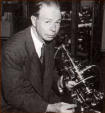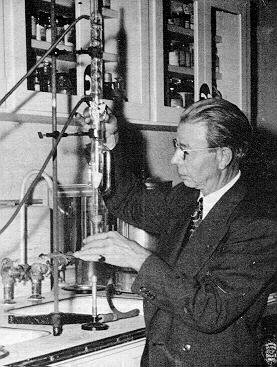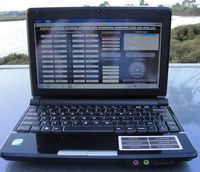
RIFE CRANE When Dr. Johnson and Philip Hoyland were testing the first proto-type |

 |
|
 |
|
When Dr. Johnson and Philip Hoyland were testing the first proto-type of the Rife Ray #5 or Beam Ray Clinical instrument in the summer of 1936 they had an interesting effect take place. At that time they were at Dr. Rife's laboratory testing different bands of frequencies on the various microorganisms. Dr. Johnson wrote about what happened in a letter he sent to Dr. Gruner on November 4, 1936. He also sent a copy of that letter to Dr. Rife: DR. JOHNSON: “Last summer, in hunting for the M.O.R. for the other two reproductive forms of the cryptomyces pleomorphia, we ran into a new band of oscillations which introduced itself to us by killing all three forms - those that we called BX, our filter-passing form; then a transitional form such as you found in the monocytes in the blood; and then the third or highly developed form coming from the sporangius forming from the hyphas of the mycelium. At the same time that this new wave band arrived, we broke all the glass in the laboratory of a certain shape, not only in the room where we were working but in all the other rooms...we had been troubled a great deal with a mold because in the microscope room there were no windows, but this band not only destroyed that mold, which was growing on the leather objects in the room, but every bacteriological culture that we had in the laboratory! It cleaned us out completely so we had to start from scratch and replace our losses. In fact, we were all so surprised that we began to feel each other’s pulses to see if we were still alive. As no harm had been done to us, we proceeded to test the new band out on mice, rats, rabbits, guinea pigs and dogs. So far as we were able to discover, it is not at all destructive or injurious to normal cell tissue. While we have been forced to modify our machine so as to produce this new band, still it is so much more effective clinically that we look upon it as a very advantageous discovery. However, our experience has forced us to do all of our experimenting with the new ray [Rife Ray #5 or Beam Ray Clinical instrument] completely outside of our laboratory building or abandon all form of bacteriological experiments, because it instantly kills them all.” (Letter from Dr. Johnson to Dr. Gruner (copy sent to Dr. Rife) dated, November 4, 1936. Page 1, Page 2). Dr. Johnson clearly points out in this letter that this was done with a new Rife Ray. Dr. Johnson had been using the Rife Ray #4 since the fall of 1935 on his patients but here he points out that they were using a new Rife Ray machine and that it was clinically more effective than the machine he had been using up until this time. In the Beam Ray Trial documents Philip Hoyland stated that he had built a new Rife Ray instrument in the summer of 1936: (Beam Ray Trial Transcript #956) HOYLAND: “In the summer of 1936 I designed a new machine, or rather I checked it there at the lab. I had designed it in Pasadena, and we tested it out then.” (Beam Ray Trial Papers). Also in another document called "Development of the Rife Ray" we have supporting evidence that a new Rife Ray was built in 1936: "In the early part of 1936 Commander Rife and Mr. Hoyland spent much time collaborating on revising some of the applications of the fundamentals of the instruments due to the advancement that had taken place in the application of electronics and it was found that the carrier wave used in the previous instruments could be eliminated. During the summer of 1936 further experiments were carried on, which resulted in an entirely new method of generating the desired frequencies and produced a constant input and output in the instruments.” (Development of the Rife Ray). With the Rife documents showing that Philip Hoyland built the new Rife Ray or Beam Ray Clinical instrument in the summer of 1936 we know that this was the machine that Dr. Johnson was referring to in his letter. In that letter Dr. Johnson clearly states that during the summer of 1936 they had tested this new machine in the laboratory. Dr. Johnson’s statement also confirms Philip Hoyland’s statement given in the Beam Ray Trial documents that the machine was tested in the laboratory. The documents all support each other and show that it was the Rife Ray #5 or Beam Ray Clinical instrument that they were using which produced this amazing effect. In this same letter Dr. Johnson stated, not once, but twice that this work was done with the new Rife Ray machine. Here is his other statement: DR. JOHNSON: “I can assure you that no one, not even myself, could help but be astounded at the results we are now obtaining with the assistance of our new machines and our new band of MOR’s.” (Letter from Dr. Johnson to Dr. Gruner (copy sent to Dr. Rife) dated, November 4, 1936. Page 1, Page 2). This letter was written in November of 1936 a few months after the laboratory testing was completed on this new Rife Ray machine. They now had built more than one of these new machines as pointed out by Dr. Johnson when he said “our new machines.” Again Dr. Johnson points out that this is a new style of machine and it has a “new band of MOR’s.” In the Beam Ray Trial documents Philip Hoyland’s complete statement revels that he was using different frequencies than Dr. Rife: HOYLAND: “In the summer of 1936 I designed a new machine, or rather I checked it there at the lab. I had designed it in Pasadena, and we tested it out then and the frequencies were not the same as on Dr. Rife’s machine.” (Beam Ray Trial Papers #956). This statement made by Philip Hoyland about the frequencies not being the same as Dr. Rife’s original frequencies is confirmed by Dr. Johnson. So Dr. Johnson’s statement in his letter clearly shows that he understands that this new machine is using different M.O.R.s than what Dr. Rife was using in the Rife Ray #4. Dr. Johnson also points out that these new M.O.R.s are more effective than the original M.O.R.s found by Dr. Rife. Today we now know that these new M.O.R.s. that Philip Hoyland was using were based on Dr. Rife’s original M.O.R.s. They were just higher, more powerful, harmonics of Dr. Rife’s original frequencies. From the Beam Ray Trial we know that Philip Hoyland stated that the frequencies he was using in this machine were not the same as the frequencies that Dr. Rife originally found. This however does not change the fact that all Philip Hoyland did was multiply Dr. Rife’s original frequencies up in harmonic steps to use them with this new Rife Ray #5 or Beam Ray Clinical instrument. Without Dr. Rife’s original frequencies Philip Hoyland would have had nothing. Probably the most important fact is the higher harmonics seemed to work better at devitalizing the organisms. As mentioned before, Dr. Johnson indicates in his letter that this new machine works better than any of the previous machines they had used up until that time (Rife Ray #3 and Rife Ray #4). His letter also shows that he is very impressed with the results they were obtaining with it. Another important fact we learn from this letter is Dr. Johnson now had the M.O.R. for the cryptomyces pleomorphia fungi. He had been trying to get Dr. Rife to find this M.O.R. for many months, without success, because Dr. Rife had developed eye problems and could not use his microscope. But now he had the ability to produce its frequency with the new machine. Another thing that Dr. Johnson pointed out was the fact that they had killed all the bacteriological specimens in his laboratory with the new Rife Ray machine and that they had to use it outside of the laboratory or it would kill all the new replacement specimens they had to obtain. Dr. Johnson in this same letter to Dr. Gruner said the following about this new Rife Ray machine which Philip Hoyland built: DR. JOHNSON: “We are having a great time out here. I have opened a clinic in the Pasadena Home for the Aged and am having excellent luck. Of course, what I am trying to do is to experiment with the effect of the Rife Ray on bacteria in vivo. Our laboratory work has demonstrated pretty conclusively what it will do in vitro. The clinic is held three mornings a week, Tuesday, Thursday and Saturday. Yesterday I had eighteen patients. Among them were two cases of pulmonary tuberculosis, three cases of carcinoma, two cases of old chronic varicose ulcers of the leg, and sundry other cases of more or less definite infectious origins…I certainly wish that you were here to work with me because I am afraid that even you, who know what we are trying to do, will not believe some of the yarns that I would have to tell you as to what is occurring in the clinic without actually seeing them for yourself.”(Letter from Dr. Johnson to Dr. Gruner (copy sent to Dr. Rife) dated, November 4, 1936. Page 1, Page 2). Many people believe that Philip Hoyland’s Rife Ray #5 or Beam Ray Clinical machine was somehow inferior to Dr. Rife’s previous instruments in effectiveness in devitalizing microorganisms. But Dr. Johnson points out that this instrument was working better than any previous instrument they had used in the past. In another letter to Dr. Meyer, M.D. Dr. Johnson again talks about the effectiveness of this new Beam Ray Clinical machine: DR. JOHNSON: “I am conducting a very interesting clinic three times a week with the Rife Ray, treating about twenty two patients a session, and we are obtaining much valuable information from our work. We are encountering many physical problems in the production of the Ray, the greatest difficulty being to obtain uniform results from the apparatus which we have. At times the results of the Ray are absolutely astounding, causing an instantaneous sterilization of the wounds whether interior or exterior. But owing to the slight changes in the temperature of the room and apparatus, the same setting of the dials does not give us the same output, and hence our results are unsatisfactory. However, we believe now that we have developed it to a point where we can very greatly diminish the errors in output and substantially increase the beneficial results or the effect of the apparatus.” (Letter from Dr. Johnson to Dr. Karl F. Meyer dated, December 7, 1936). Even with the calibration problems with the instrument Dr. Johnson was still impressed with how well the instrument was working. If Dr. Johnson only would have had the ability that we have today to measure the frequency correctly, rather that relying on dial settings, he would have always had consistent results. With modern technology we can accurately measure a frequency regardless of any changes that the climate may make. Dr. Johnson only had the dial settings to work with back in the 1930’s. The limits of the 1930’s technology would have given him the problems he talked about in his letter. Even with the limits of the 1930’s technology Dr. Johnson stated they had solved many of their problems with the instrument and this helped them to obtain even better results. During this same clinic which Dr. Johnson was conducting he was also using this new Rife Ray on 30 cataract patients. In a letter that Dr. Johnson wrote to Dr. Joseph Heitger he stated the following: DR. JOHNSON: “I closed my clinic on May 28, having been running it for eight months. Our special effort this past winter has been working on cataracts, and while we have treated a number of other infectious conditions (if cataract is an infection), still our principal work has been on the eye. We have had about thirty cases of cataract...Every case that we have treated, with the exception of one which was a traumatic cataract where the lens was absolutely opaque and of recent origin, has been benefited...The application of the Rife Ray as we have used it , does, in the great majority of cases restore the full visual function of the eye; that is, that portion of the visual disturbance due to opacities in the lens. How it does it and why it does it, I do not know, but the above statement is an actual fact, supported by many cases…Oh Lord; How I wish we could get together and go over this work! I believe it will result in epochal changes in the profession’s handling of cataract cases.” (Letter from Dr. Johnson to Dr. Joseph D. Heitger dated, June 1, 1937). In this letter to Dr. Heitger, Dr. Johnson again points out how well this instrument worked. In this letter he also talked about the calibration problems they were having with this new Rife Ray machine. The Beam Ray Clinical machine was known for its calibration problems. Even the Beam Ray Trial testimony and other documents show that this instrument had calibration problems. Eventually Philip Hoyland divided the audio frequency range of the Beam Ray Clinical instrument into four bands. This helped but did not solve the problems completely. By the early 1940’s the audio oscillator was replaced by the new stable Hewlett Packard audio oscillator. This Hewlett Packard audio oscillator was far superior to the original RC (Resistor Capacitor) style audio oscillator used by Philip Hoyland. Had they had a modern frequency counter they could have easily solved any of the calibration problems they had. Today if anyone builds this instrument they would want to have the ability to check the RF carrier frequency so that they will have consistent results. Next we will explain how this instrument had the ability to devitalize so many organisms as described by Dr. Johnson in his letter. He stated in his letter of November 4, 1936 that it was done using a “new band of oscillations.” This happened at the time they were testing this new Rife Ray #5 or Beam Ray Clinical instrument at Dr. Johnson’s laboratory. Since it was a proto-type machine we do not know what the original frequency range of the audio oscillator was when this happened. What we do know is the original Beam Ray Clinical instrument which we obtained from Dr. Low had four frequency bands which covered a frequency range from 160 Hertz to about 42,000 Hertz. Whether it was one of the lower bands or one of the higher bands we do not know. But this we do know, Dr. Johnson would have had this band put into the new instrument because he stated this: DR. JOHNSON: “While we have been forced to modify our machine so as to produce this new band, still it is so much more effective clinically that we look upon it as a very advantageous discovery.” (Letter from Dr. Johnson to Dr. Gruner (copy sent to Dr. Rife) dated, November 4, 1936). This statement from Dr. Johnson leaves no question that this band of oscillations was included in the new Rife Ray machine which eventually became the finished product that was sold by the 1938/1939 Beam Ray Corporation. Why this new machine was able to kill all the organisms that Dr. Johnson talked about is easy to explain since we now know how this instrument worked. If you look at the spectrum analysis graph, shown below, you can see the many sideband frequencies created by a single audio frequency.
"Never must the physician say, the disease is incurable.
By that admission he denies God,
|
 |
"Royal rife developed "Five" Rife machine prototypes ,the fith rife machine(beam ray)was reported to be the most powerful" ""I can assure you that no one, not even myself, could help but be astounded at the results we are now obtaining with the assistance of our new machines and our new band of MOR's.(Mortal oscillatory rate)" (Letter from Dr. Johnson to Dr. Gruner (copy sent to Dr. Rife) dated, November 4, 1936."." The worlds most advanved multi purpose Fully Automatic Rife/Hoyland System Read more here
|